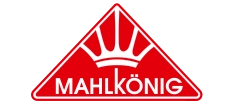Centralizedaccreditationhubformedicalboards
Codal partnered with ACCME to design and develop the Learner Reporting System (LRS), a centralized platform that streamlines accreditation management for administrators, medical board members, and course providers. By modernizing UX/UI, improving data visualization, and building a robust Angular and Django-based system, the platform now enables faster, more intuitive access to millions of records.
ORGANIZATIONS MANAGED ON 1 PLATFORM
1,700+
CREDITS TRACKED & REPORTED
1.5M+
COMPLETION RECORDS ACCESSIBLE
400,000

The Accreditation Council for Continuing Medical Education (ACCME) identifies, develops, and promotes rigorous national standards for quality medical education to improve physician performance and patient care.

The challenge

The solution
- Design several different platform interfaces to meet the specific needs and expectations of each user type.
- Tailor the platform’s layout to complement large amounts of data visualization.
- Engineer the platform’s front and back end utilizing the frameworks Angular and Django.
Modernizing UX/UI and data management for a seamless accreditation experience

The result
Related case studies


Empowering young women through an advisorship portal with a revamped UX/UI
Empowering young women through an advisorship portal with a revamped UX/UI


Streamlining eCommerce for a leading fitness brand
Streamlining eCommerce for a leading fitness brand


Powering growth with smarter eCommerce & product data management
Powering growth with smarter eCommerce & product data management


Creating a user-friendly parts marketplace for coffee grinders
Creating a user-friendly parts marketplace for coffee grinders


Streamlining vehicle maintenance through a custom, modern portal
Streamlining vehicle maintenance through a custom, modern portal


Transforming skincare with HIPAA-compliant, personalized eCommerce
Transforming skincare with HIPAA-compliant, personalized eCommerce


Elevating a B2B distributor’s eCommerce experience with a custom platform
Elevating a B2B distributor’s eCommerce experience with a custom platform


Revamping the backend system for Cost Plus Drugs to streamline operations & boost prescription fulfillment
Revamping the backend system for Cost Plus Drugs to streamline operations & boost prescription fulfillment

Curious about what’s possible?
If this case study sparked ideas, let’s talk. From strategy and experience design to unified commerce and product engineering, Codal helps ambitious brands turn vision into reality.
By submitting this form, you agree to be added to Codal's marketing database, where you can opt out at any time.